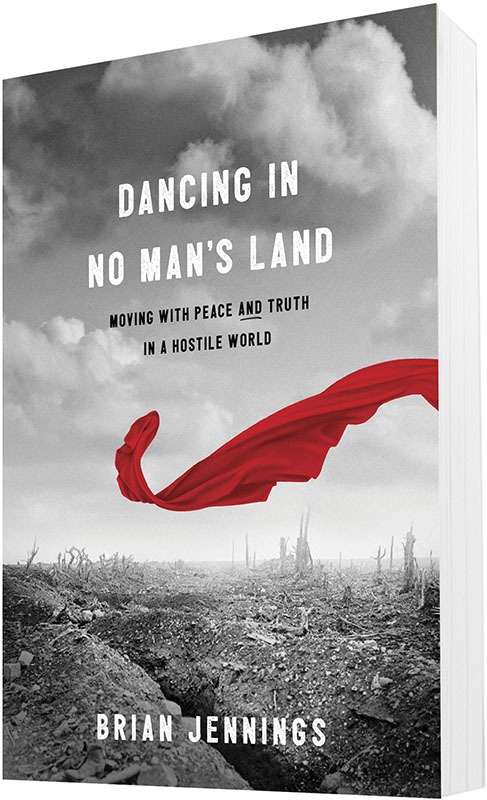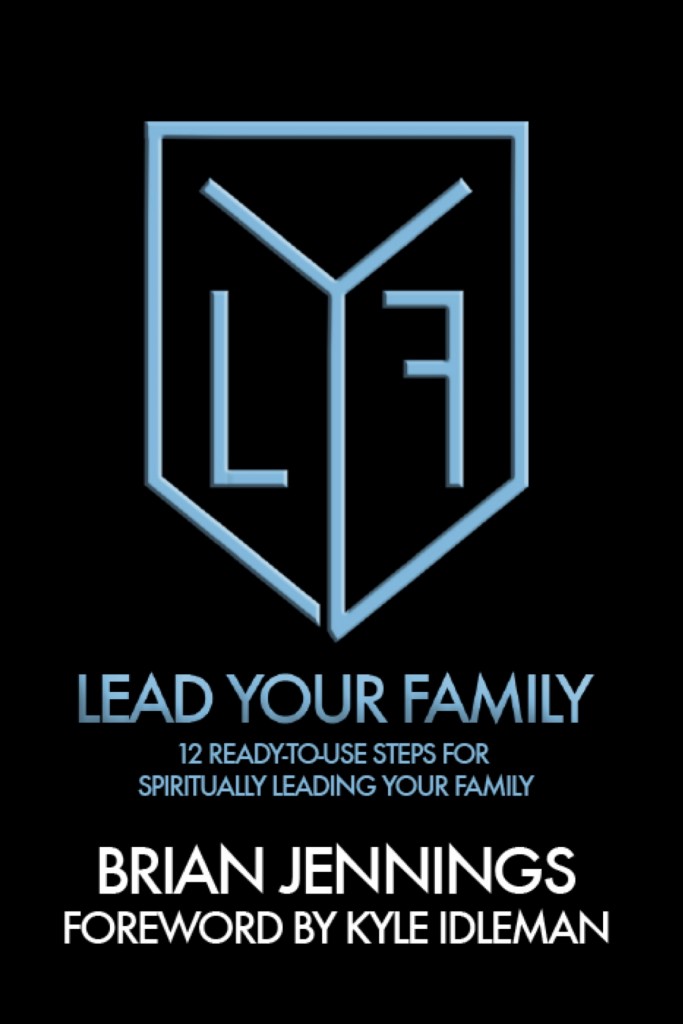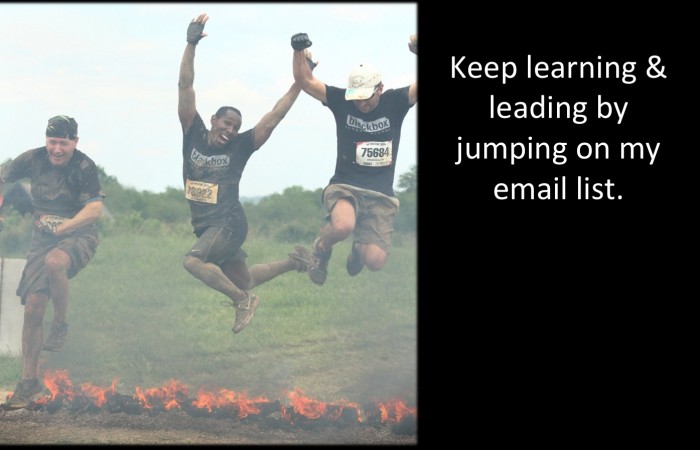Understanding nonviolence (guest blogger, Lance Schaubert)
Written by Brian Jennings, Posted in Blog, Your World
I’m thrilled that Lance Schaubert wrote a post for my blog. If you like Dancing in No Man’s Land, you owe some thanks to Lance. He not only made my writing better, he made me a better writer. I’ve also come to appreciate Lance’s ministry in New York City and his friendship. Lance wrote on this topic because nothing breaks my heart more than witnessing Christians draw lines in the sand about things they don’t understand. When someone is labeled as a pacifist or a believer in non-violence, what assumptions do you make? People shut-down when they immediately go from 0 to 100 – such as from their interaction to a grumpy neighbor to the atrocities of Hitler. That’s a counterproductive leap to attempt. Can we just talk about how you treat the grumpy neighbor without any grand leaps?
Lance is great at making people think, which then helps them do. Read this and you’ll see what I mean.
(Brian)
—
When you wake up in the middle of the night and one of your neighbors is screaming bloody murder and cussing some of the worst cusswords in the 1812 Dictionary of the Vulgar Tongue, you intervene. It turned out one of my other neighbors had gotten absolutely blitzed, tried to punt a woman down the stairwell, and had that look in his eyes like he had more in mind. It’s not fun getting in between them when that’s happening, it’s not fun having the hard talk to both, reporting one and talking to him about AA and debriefing with the other. It’s not easy either.
But it’s good.
It’s also neither fun nor easy to intervene in a domestic violence situation on 5th Avenue in the middle of the night when you’re walking your dog and want to go to bed, but it’s good.
And it’s neither fun nor easy for your wife to willingly get used as a battering ram by the police so that your neighbors in JFK get some more time to experience some of the love found in the countless Bible verses on welcoming the stranger and foreigner.
But it’s good.
The thing is, you don’t start out putting your body on the line like the martyrs. St. Francis didn’t start out marching to Israel to protest both sides of the crusades. Ghandi, for instance, started out as a lawyer who wanted justice for his clients and neighbors. You start out learning how to refuse to respond when someone says something evil to you in a group and looks to you and says, “You know what I’m saying?” You start out refusing to laugh at the cruelty of others. You start out learning how to make peace at home.
The blindness of primary culture erects the main blockade towards that end.
Primary culture blinds us to our own blindness. For instance, I can know all there is to know about growing up in Southern Illinois as the descendent of European and Semitic immigrants while knowing woefully little of my gypsy and native roots due to the pervasiveness of primary culture. It takes work — years and years of willful application of the mind — for me to discover what my Blackfoot, Cherokee, and Roma Gypsy ancestors went through because the assumptions of Jewish German culture and Irish Immigrant culture in 20th-century Southern Illinois overwhelms whatever I could discover. It takes work to find the unpopular, nonconforming ideas.
Which means it takes work to understand nonviolence.
And let’s be honest: most of us are lazy.
See primary culture teaches everything we need to know about tyranny, holy war, even just war theory, neutrality, and victimhood. Our culture shows us how to take what we can while we can, how to demonize another person to justify verbal and physical and sexual violence, how to lie to ourselves to pretend as if a just war has ever been waged (there’s no such thing in human history), or how to be selfish like Switzerland while the world burns or how to simply bow the knee and take the sword to the belly. It would be a grave mistake to assume I’m talking only about the declaration of war: I’m talking about all forms of violence, on the global scale and on the local scale, with our tongues and systems and hands and hearts and emotions and social dynamics and so on.
Again, it starts small: either small concessions to and acts of violence or small resistances to violence. Sure, the church of Rome wasn’t built in a day. But neither was Auschwitz.
It starts with your neighbor screaming in the stairwell and you rolling over and going back to sleep.
Very, very few of our primary culture’s heroes actually stand out to teach us how to assert ourselves calmly and creatively to solve real systemic and interpersonal problems. Sure, we have examples of aggressive assertiveness. Or passive-aggressive assertiveness. And we have plenty of examples of calm acceptance of the status quo.
But almost no one seeks out the old names who can teach us partly because we’re scared of other religions (we can’t learn from Buddha because we might become Buddhists!), partly because we’re scared of other cultures (we can’t learn from Gandhi because he was Indian!), partly because we’re scared of someone’s philosophical posture (we can’t learn from Gene Sharpe because he was an atheist!), partly because we’re scared of the moral failings of the poor (we can’t learn from Martin Luther King Jr. because he was an uppety black man who cheated on his wife!), partly because we’re scared of obscure names (who’s A.J. Muste?), and partly because we’re scared of Christian traditions outside our own (we can’t learn from William Penn because he was a Quaker or Dorothy Day because she was a Catholic or….)
This cowardly refusal to read the tradition of nonviolent thinkers, Christian and otherwise, leaves us back in the role of primary culture: assuming what we assume simply because we and everyone else around us assumes it. And we end up with nothing but a mystic belief in the powers of biblical exegesis to save us, as if exegesis happens in a void unconnected from a specific language, a specific tradition of hermeneutical assumptions, and a specific community who likes propping up all forms of violence from signing up for the military to bowing the knee to Caesar’s police force while Eric Garner’s getting strangled to death on live television over a pack of cigarettes to shutting up and taking it while Crazy Aunt Midge picks fights about her pet issue and terrorizes the children at the family reunion. Or worse, to blow up at her and make a scene and do to her what she’s doing to everyone else.
From the side of tradition, most exegetes and laymen alike remain woefully ignorant for three reasons. First, we don’t know the tradition of nonviolence. Second, we don’t know the methods of nonviolence. And third, we’ve never tried to apply it in our own lives with any serious effort. It’s telling that the East Point Peace Academy refuses to let their disciples protest until they’ve spent THREE YEARS training in the discipline: Kazu who runs the school treats it like a martial art, full of discipline.
First, we don’t know the tradition. I say that as someone who himself has only scratched the surface of the tradition: I know enough to know how very, very little I’ve read on nonviolence. And I know enough to know many bible college professors and graduates who once claimed to hold up nonviolence or pacifism as their creed and have now abandoned it even though they’ve read very, very little of the tradition. That’s right: professional thinkers have claimed to hold one position and then have rejected that position without having fully weighed the arguments held in the tradition of that position. You’ll encounter someone who’s read Walter Wink or bits of N.T. Wright or a Quaker here and there, but they remain ignorant of the broader body of work. For starters, I want to give a Reading List of fifty books and articles you’ll have read long ago if you already consider yourself well-read on this subject whether you agree with the position of nonviolence or disagree. This list is a starting place, not an ending place, and therefore works something like the bibliography of a 101 course on practical nonviolence — that so many doctors of theology remain ignorant of many of these volumes on all five sides of the debate or merely aware and unstudied in them betrays how ignorant the theological and ecclesiological community at large is of the theory, methodology, and personal praxis of nonviolence. It’s a list that includes writings from William Penn to Ghandi to Martin Luther King to Dorothy Day to Tolstoy to Gene Sharp. It ends in Beautiful Trouble by Andrew Boyd.
That last one focuses on the second point, the methods. Nonviolence takes work: mental, physical, spiritual work. It’s the practical outworking of wisdom in the highest degree, the ultimate application of creativity. It precisely requires us to invent new ways of solving problems that acknowledge the needs of both sides, favors the true victim of an injustice, and brings about a dialog of reconciliation so that the victim is dignified and the perpetrator penitent. Nonviolence, in other words, erects public confession booths that bring about conviction, confession, and absolution. The last book shows how culture jamming, debt strikes, creative disruptions, blockades, boycotts, occupations, media-jacking, laughtivism, park day and so on have all worked to change cultural narratives and assumptions about real problems and have provided real solutions. There’s a PDF available — it’s a great starter for folks.
But even if you don’t go that far, ask yourself a question: what are some practical steps to promote deescalation of violence and yet the assertiveness of truth to promote dialog towards reconciliation? What can I do to resist peacefully the violence in my neighborhood, school, workplace, or family?
How does love have its own nonviolent force? And how can I wield that nonviolent force in my own life in even small ways?
Because for the last point, as I said, most people have never tried to change a message through direct nonviolent action. And that INCLUDES most alleged pacifists. I cannot tell you the number of times I’ve asked self-proclaimed pacifists, current and former, what methods they’ve tried to only have a blank face in response. It’s quite frustrating, really, to have the most vocal proponents of a theory completely ignorant of the tradition, ignorant of the methodology, and inexperienced as to its application in society and in the home. And it’s doubly frustrating to have others claim it doesn’t work without having ever tried it. Particularly when their branch of Christianity literally has protest in the name: Protestant.
I’m reminded of a friend of mine who hasn’t sided with me on this issue yet. He’s an ex-special forces type who was opening a shooting range and he told me that so many people conceal to carry without deescalation training at his megachurch that if an active shooter showed up, he saw his job as getting as many people to the exits as possible because the guns in that room wielded by the untrained minds would work like dominoes, turning one active shooter into many. He and I agree about the practice of active peacemaking and deescalation.
It starts small:
Who do you need to forgive?
From whom ought you ask forgiveness?
And where can you assert yourself in love, without violence, to cause a change even if that means you lose money, power, or charisma?
How can you refuse to agree with, refuse to join, and refuse to assault those who do even small acts of verbal or physical or sexual or systemic violence in your presence?
Primary culture blinds us to its blindness: it’s easy for us to hide our heads and remain ignorant of how easy it is to remain violent, harsh, or passive in our culture. But for those truly interested in Dancing in No Man’s Land, it takes an incredible amount of study and dedication and hard work.
But so do all movements deeper into the mystery of the Trinity. So do all aspects of the life of wisdom. So do all happy days worth celebrating and with some thought and some planning and some work, we’ll all meet at that table of reconciliation on that great day.
You doubtfully realize it yet, but deep down at the bottom of everything, every Christian is a pacifist on some level. To atone is to pacify—pacifism of wrath and violence literally forms the crux of our faith. The highest sacrifice that turns away violence and wrath, Jesus tells us, is to lay down one’s life for one’s friends. We praise and celebrate both Christ and his martyrs for dying for their enemies. If not at very least for an example of how to live our lives, how to make peace, for what purpose do we turn to their deaths?
The film Dr Strange features an arrogant surgeon who, after a disastrous car crash, loses the neurological functionality of his fingers. When no fringe science heals him, he seeks out an Asian monastic community who teaches him the magic of metaphysics. The Big Bad in this film is the demiurge over the Dark Dimension which means he wants to consume all things in the realm of the void without time. Dr Strange spends time learning how to fight off this threat with various metaphysical weapons, the chief of which is time itself:
Could you choose to keep on losing forever so that humanity can live?
Could you choose to keep on losing forever so that humanity can live?
Or have you not yet resisted to the point of shedding your blood?
Hebrews 12:4
—
Lancelot Schaubert has sold hundreds of stories, articles, and poems to markets like TOR (Macmillan), The New Haven Review, McSweeney’s, The World Series Edition of Poker Pro, The Poet’s Market, Writer’s Digest, and many similar venues.
To grab a free copy of chapter one of his best written work (slated for 2019) and his best song, click here.





